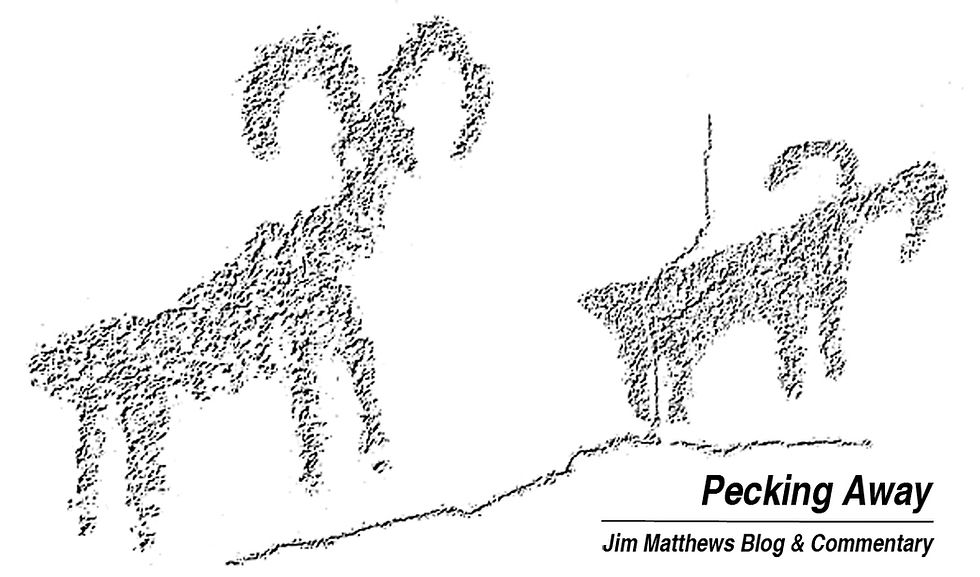Wildflower photography is easy if you follow a few simple rules
- Jim Matthews
- Mar 18, 2017
- 3 min read
Updated: Mar 18, 2022

By JIM MATTHEWS
www.OutdoorNewsService.com
It’s wildflower season across Southern California. You know what that means?
Social media and e-mails will be jammed with poor to mediocre photos of flowers with the people who snapped the images gushing about how amazing this “super bloom” is this year. Gaaaack! It’s starting.
Don’t get me wrong, I’m an addicted wildflower and blossom photographer. I even have an album on my personal Facebook page entitled “Blossoms.” But what is disheartening to me is that apparently most people can’t compose an image or operate a camera. With the exceptional quality of photography equipment today, even on cell phones, this should be wonderful time of year for sharing. Instead, it reminds me of when I was a kid and was forced to watch horrible slide shows with blurry images, crooked horizons, and clowning children in front of signs. They were from friends’ vacations to June Lake or the Grand Canyon. Wildflower season has become as bad.
It’s enough to make you want to run screaming into the brightly-colored desert.

So I’m going to help you take better pictures. Here are Jim’s Simple Rules of Wildflower Photography:
GET CLOSE, AND THEN GET CLOSER: Most phone cameras have amazing close-up abilities. For serious amateur photographers, invest in a macro or close-focusing lens. Vast fields of flowers might inspire you, but they generally don’t photograph all that dramatically. Yet, if you get right up in that flower’s face, you can get a dramatic image. You don’t shoot pictures of your family at Disneyland from 200 feet away so they are just more faces in the crowd, do you? (Please, tell me you don’t!) Think of those individual blossoms as a long-lost member of the family smiling naturally for you. Get close.

PAY ATTENTION TO THE BACKGROUND: The biggest problem with flower images is that the background – the part of the image that is not flowers – is often cluttered and jumbled with distracting shapes and colors. You want the focus on the flowers; you don’t want people eyes being bounced around the image by other things. This is partially solved by getting close to the flower because the background is blurred. Advanced photographers will know how to open up the aperture on their lens to really blur the background. Using a telephoto lens also helps isolate the flower and blur the background.
Even with a blurred background, you still need to make sure there isn’t a blurred highlight that is distracting. A blurred tree or telephone pole is still a straight line cutting across the photo. A blurred white car is still a big, bright highlight.

GET DOWN ON YOUR BELLY: Most people stand or kneel down to take photos of wildflowers, shooting down on them. While this works with some types of sunflower-type blossoms, most flowers are best photographed from the side. That means you might have to get down on the ground to do justice to the flower. Most of my best images have been taken when I was on my belly.
DON’T PHOTOGRAPH IN THE MIDDLE OF THE DAY: Try to do your photography in the early morning or late afternoon. The middle part of the day has flat light and harsh shadows, but morning and afternoon light is richer, providing warmer colors. Even those boring landscapes of fields of flowers will have better colors and look better. (I still won’t like them, but they are illustrative and much better than ones shot mid-day.)
So there you have it: Four simple rules for photographing the spring’s blossoms. If you want to get serious about wildflower photography, most camera stores have regular lessons in photography that will do wonders for all those other things you probably don’t think about: composition, lighting, using image editing software, different lens and when to use them – all the technical and artistic stuff that will make you an even better all-around photographer. There are camera clubs in most cities with people who are happy to share, and – of course – there is a plethora of on-line instruction available.
Quite frankly, it’s easy to take dazzling images of wildflowers. Glamour and wildlife photography is first and foremost about having access to the beautiful subjects who let you photograph them. Wildflowers are all willing models posing in mass for us right now.
END
[Jim Matthews is a syndicated Southern California-based outdoor reporter and columnist. He can be reached via e-mail at odwriter@verizon.net or by phone at 909-887-3444.]























Comments